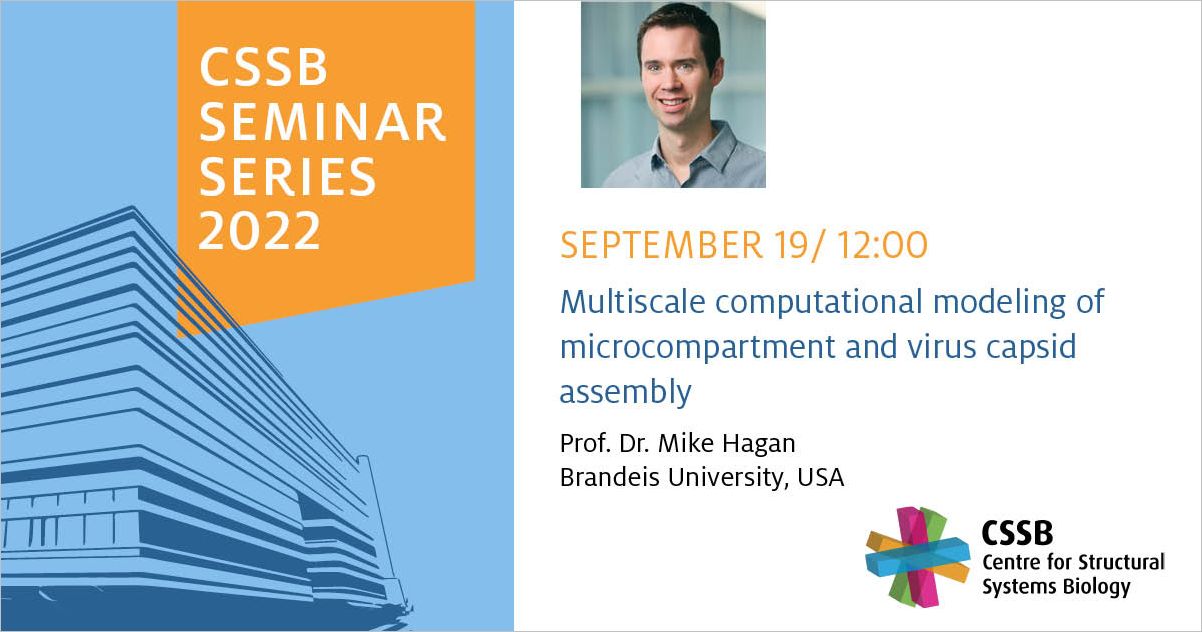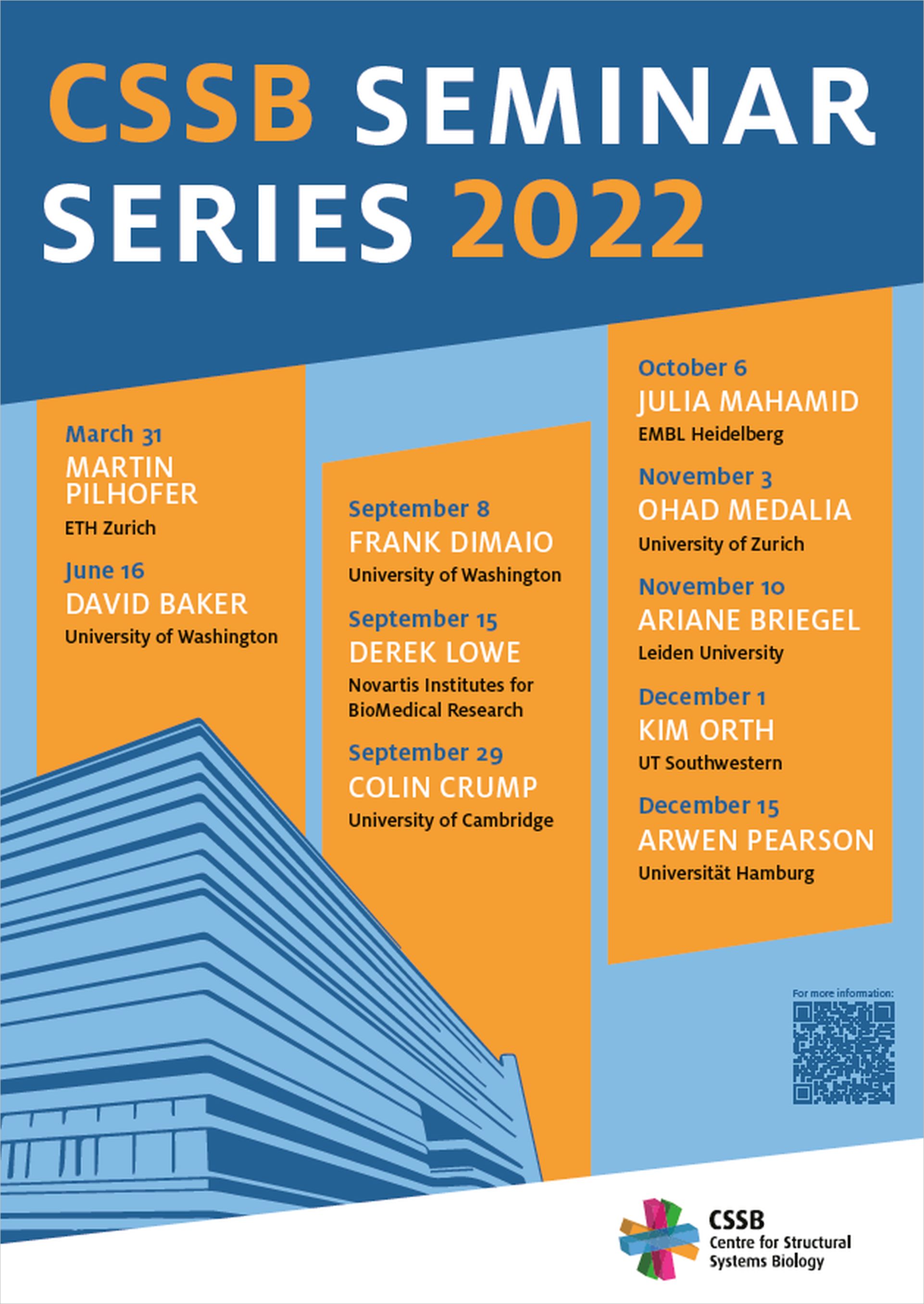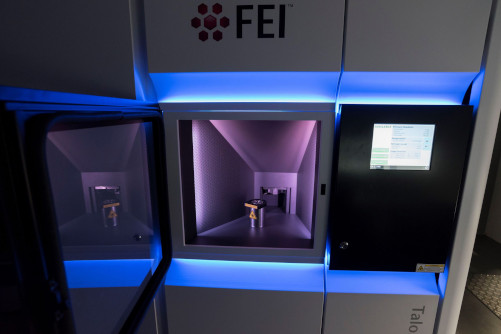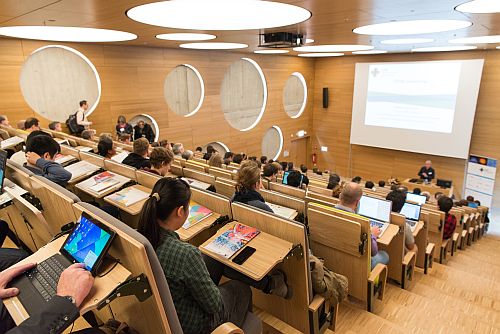CSSB Seminar Series - MIKE HAGAN

Abstract:
The self-assembly of protein shells with well-defined sizes and structures is an important mechanism for compartmentalization, storage, and transport in biology. In this talk I will discuss two (time permitting) prototypical examples of size-controlled protein shells, and the use of computational modeling to investigate their assembly pathways, factors that control their size, and how interactions with an encapsulated cargo or small-molecule antiviral agents can divert assembly pathways toward alternative sizes and structures.
(1) Hepatitis-B Virus (HBV) assembles from a single capsid protein that adopts different conformations to form icosahedral capsids with different sizes containing 180 or 240 proteins and T=3 or T=4 symmetries, respectively. The assembly pathways and mechanisms that control this dimorphism remain unclear. In this presentation, I will describe computer simulations of HBV assembly, using a coarse-grained model that has parameters learned from all-atom molecular dynamics simulations of a complete HBV capsid, and yet is computationally tractable. Dynamical simulations with the resulting model reproduce experimental observations of HBV assembly pathways and products. Using recently developed trajectory analysis methodologies, we identify pathways leading to T=3, T=4, and other experimentally observed capsid morphologies. The analysis identifies factors that control this polymorphism, in particular, the conformational free energy landscape of the capsid proteins and their interactions. We then use the simulation framework to investigate how small-molecule antiviral agents can alter these assembly pathways to prevent the assembly of infectious virions.
(2) Bacterial microcompartments are proteinaceous ‘organelles’ found in bacteria, consisting of large icosahedral protein shells that assemble around collections of enzymes, scaffolding proteins, and other components involved in particular metabolic processes. I will present results from coarse-grained computational modeling and theory, which elucidate factors that control the size, structure, and function of microcompartments. In particular, we find that the properties of the encapsulated cargo and the scaffolding proteins play a key role in determining both the size of the assembled shell and the amount of cargo loading. I will also discuss parallels between the condensed interior cargo of microcompartments and liquid-liquid phase separated domains.




